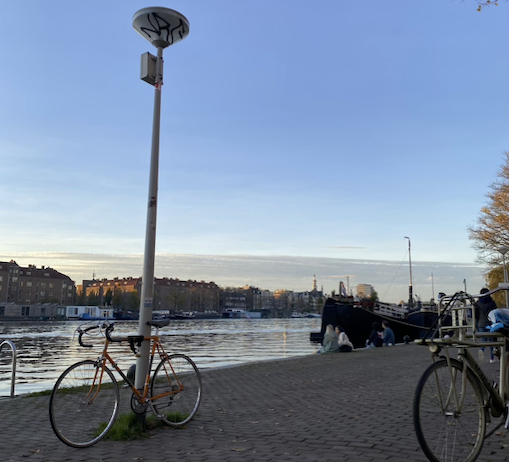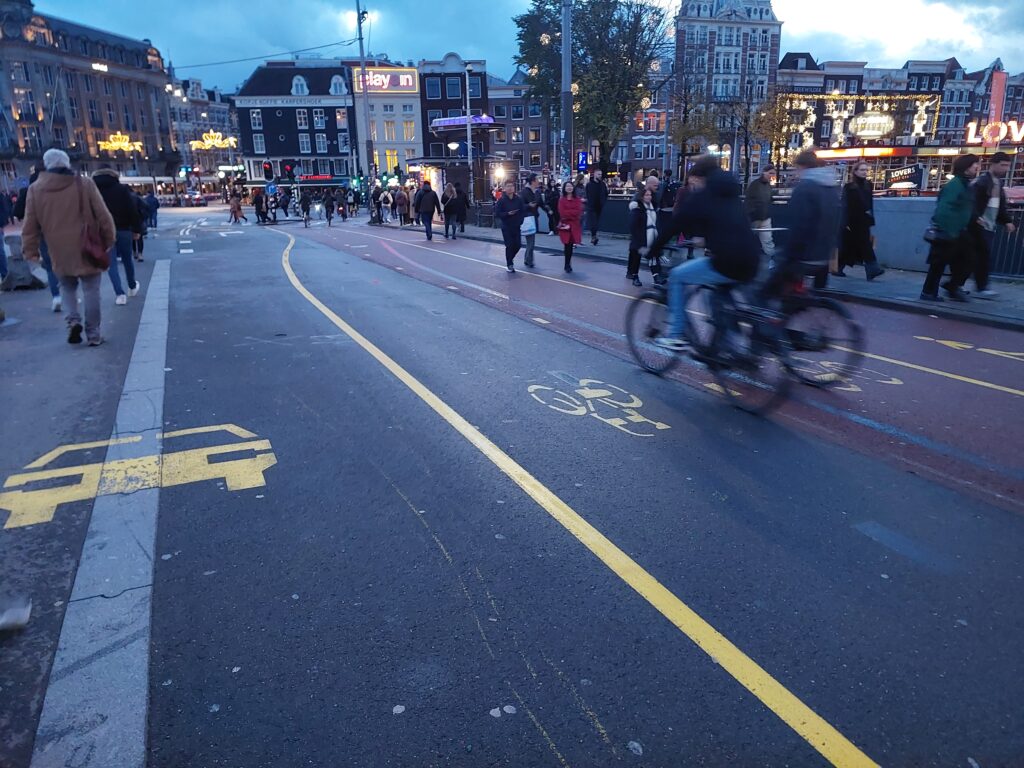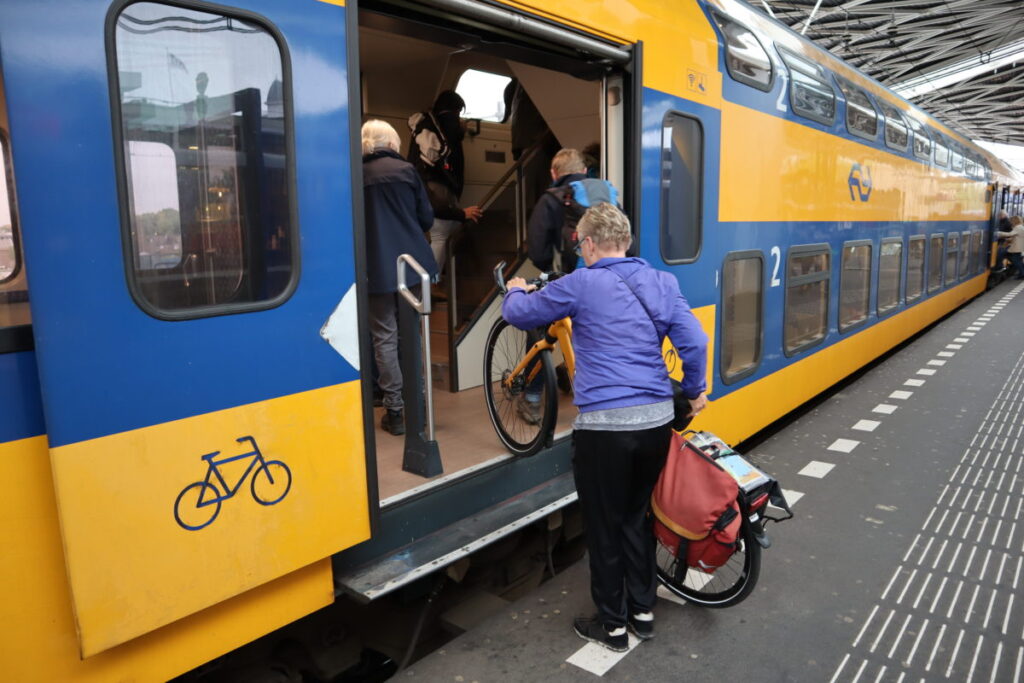Conducted by Anne Kubo| LinkedIn

Anne Kubo: Hello Lindsay, please introduce yourself and your research!
Lindsay Broadwell: I’m a PhD candidate at the University of Amsterdam working in the urban planning section, my supervisors are Marco te Brömmelstroet and Anna Nikolaeva. I’m working on a PhD project essentially examining Dutch cycling infrastructure from a critical perspective and asking, well, it’s held up as the solution, but what are the risks of just naively copying it and using it elsewhere?
A: How did you get to your topic?
LB: I’m going to be honest; it comes from me being a bit of a contrarian by nature. When I was doing my master’s, I was basing it around cycling because I’ve been a cyclist and bike mechanic for many, many years. Cycling is kind of just a thing I am obsessed with. And what turned up in the literature over and over was how great the Netherlands is, how Dutch cycling infrastructure is the best, and everyone should copy it. And so, for my master’s research, and when I was exploring PhDs, I visited the Netherlands to see what it’s all about. And while it is true that cycling is possible here, ‘the Netherlands has got it right, this is what everyone should copy’? That I’m a little bit less sure about. Because, sure, compared to where I come from, compared to the UK and America, which is where a lot of the academics who write about this are from, the Netherlands is wonderful. It’s a cycling paradise, by comparison. But the problem is, well they say, don’t make the perfect the enemy of the good. But I would say in objective terms, Dutch cycling infrastructure isn’t even particularly good from the perspective of driving a long-term mobility transition away from cars and towards bikes. My sort of hunch, and what I’ve observed from my research so far is that cycling in the Netherlands is pretty much just pushed into the space of coexistence with cars. So, my PhD is all about exploring how and why that came about.
A: What kind of responses do you get from your critique of Dutch cycling infrastructure? Do people get defensive?
LB: It’s true that Dutch people are very fond of their bike paths. But the Dutch also, in my experience, quite like complaining. But unlike the aimless moaning that I used to encounter in the UK, it sort of comes from the perspective of ‘well, what can we do about it?’, at least in the circles that I move in. I found that a few people do get defensive when I mention the topic of my research, and that can make getting funding from existing cycling bodies difficult. But, generally speaking, I found that a lot of people are quite receptive to the idea that it’s not as good as it could be, which is the way I prefer to phrase it. People are open to the idea that cycling infrastructure could be better and that the mobility transition that the Netherlands has undergone is incomplete. I have definitely ruffled a few feathers with some people that are all about exporting their knowledge elsewhere in the world. So, if you’ve got someone saying that it isn’t as good as it could be, or even that it is bad in some cases, that tends to erode what they’re doing.

A: Sounds a bit like a diplomatic challenge as well. How do you make sense of these different perceptions around Dutch cycling infrastructure?
LB: There is a concept in psychology called habituation. If you’ve grown up in the Netherlands and spent your entire life here, a cycling path is really nothing special. However, if you go somewhere else, and there’s no cycling infrastructure at all, then you notice the absence. But while you’ve got it there, you sort of become acclimatised to it, and you stop noticing it actively. And in my mind, that also means that people don’t necessarily feel much pressure to make things better, because, as I mentioned earlier, cycling in the Netherlands is possible. You can cycle from one end of the country to the other, entirely on dedicated infrastructure. That’s great. But when you look at individual streets near where we are right now [Roeterseiland], you look outside and you’ve got two big lanes for cars, and you’ve got two little bike lanes on either side. You can see just visually the way that cycling is still kind of side-lined.
A: Why is this marginalisation of cycling infrastructure problematic?
LB: The law in the Netherlands is that if you have a bike lane, you are legally obligated to use it and are not allowed to cycle on the road. So effectively, what I suspect this approach is doing is that it’s forcing cycling to the side-lines and limiting it to the same niche it’s been in for the last 40 years, while at the same time preventing people from sort of naturally experimenting on actually taking over the street, which we see particularly with the emergence of e-bikes. No wonder there’s people saying that they hate sharing the bike path with e-bikes. To be honest, I do too because the paths are not very wide, and these people come up behind you to overtake you. If they were taking space away from cars instead it would be different. But as it is with the increasing diversity of users, I think we’re really starting to see a bit of that tension start to emerge. You have your regular omafiets, you have electric bikes, bakfietsen, all sorts of bikes with different use cases, all pressed in the same infrastructure. So, in the sort of conflicts that we’re starting to see, there is the possibility to come and say: ‘Actually, this isn’t as good as it could be.’

Concluding on what excites them most about their PhD, Lindsay says that the work allowing the application of various skills and delving deep into a subject they’re passionate about are some of the pluses that bring them joy in addition to the feeling of future potential and practical benefit of being able to live in the Netherlands.
Images:
- Wikimedia Commons (CC licences)
2016: https://commons.wikimedia.org/wiki/File:UberEats_cyclist_in_Amsterdam.jpg



